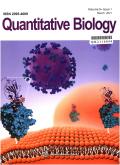DeepRCI: predicting RNA-chromatin interactions via deep learning with multi-omics data
IF 1.4
4区 生物学
Q4 MATHEMATICAL & COMPUTATIONAL BIOLOGY
引用次数: 0
Abstract
Background : Chromatin-associated RNA (caRNA) acts as a ubiquitous epigenetic layer in eukaryotes, and has been reported to be essential in various biological processes, including gene transcription, chromatin remodeling and cellular differentiation. Recently, numerous experimental techniques have been developed to characterize genome-wide RNA-chromatin interactions to understand their underlying biological functions. However, these experimental methods are generally expensive, time-consuming, and limited in identifying all potential sites, while most of the existing computational methods are restricted to detecting only specific types of RNAs interacting with chromatin. Methods : Here, we propose a highly interpretable computational framework, named DeepRCI, to identify the interactions between various types of RNAs and chromatin. In this framework, we introduce a novel deep learning component called variformer and integrate multi-omics data to capture intrinsic genomic features at both RNA and DNA levels. Results : Extensive experiments demonstrate that DeepRCI can detect RNA-chromatin interactions more accurately when compared to the state-of-the-art baseline prediction methods. Furthermore, the sequence features extracted by DeepRCI can be well matched to known critical gene regulatory components, indicating that our model can provide useful biological insights into understanding the underlying mechanisms of RNA-chromatin interactions. In addition, based on the prediction results, we further delineate the relationships between RNA-chromatin interactions and cellular functions, including gene expression and the modulation of cell states. Conclusions : In summary, DeepRCI can serve as a useful tool for characterizing RNA-chromatin interactions and studying the underlying gene regulatory code.DeepRCI:通过多组学数据的深度学习预测rna -染色质相互作用
背景:染色质相关RNA (caRNA)是真核生物中普遍存在的表观遗传层,在基因转录、染色质重塑和细胞分化等多种生物过程中发挥着重要作用。最近,已经开发了许多实验技术来表征全基因组rna -染色质相互作用,以了解其潜在的生物学功能。然而,这些实验方法通常是昂贵的,耗时的,并且在识别所有潜在位点方面受到限制,而大多数现有的计算方法仅限于检测与染色质相互作用的特定类型的rna。方法:在这里,我们提出了一个高度可解释的计算框架,称为DeepRCI,以识别各种类型的rna和染色质之间的相互作用。在这个框架中,我们引入了一种名为变型器的新型深度学习组件,并整合了多组学数据,以捕获RNA和DNA水平上的内在基因组特征。结果:大量实验表明,与最先进的基线预测方法相比,DeepRCI可以更准确地检测rna -染色质相互作用。此外,DeepRCI提取的序列特征可以与已知的关键基因调控成分很好地匹配,这表明我们的模型可以为理解rna -染色质相互作用的潜在机制提供有用的生物学见解。此外,基于预测结果,我们进一步描述了rna -染色质相互作用与细胞功能之间的关系,包括基因表达和细胞状态的调节。结论:总之,DeepRCI可以作为表征rna -染色质相互作用和研究潜在基因调控密码的有用工具。
本文章由计算机程序翻译,如有差异,请以英文原文为准。
求助全文
约1分钟内获得全文
求助全文
来源期刊

Quantitative Biology
MATHEMATICAL & COMPUTATIONAL BIOLOGY-
CiteScore
5.00
自引率
3.20%
发文量
264
期刊介绍:
Quantitative Biology is an interdisciplinary journal that focuses on original research that uses quantitative approaches and technologies to analyze and integrate biological systems, construct and model engineered life systems, and gain a deeper understanding of the life sciences. It aims to provide a platform for not only the analysis but also the integration and construction of biological systems. It is a quarterly journal seeking to provide an inter- and multi-disciplinary forum for a broad blend of peer-reviewed academic papers in order to promote rapid communication and exchange between scientists in the East and the West. The content of Quantitative Biology will mainly focus on the two broad and related areas: ·bioinformatics and computational biology, which focuses on dealing with information technologies and computational methodologies that can efficiently and accurately manipulate –omics data and transform molecular information into biological knowledge. ·systems and synthetic biology, which focuses on complex interactions in biological systems and the emergent functional properties, and on the design and construction of new biological functions and systems. Its goal is to reflect the significant advances made in quantitatively investigating and modeling both natural and engineered life systems at the molecular and higher levels. The journal particularly encourages original papers that link novel theory with cutting-edge experiments, especially in the newly emerging and multi-disciplinary areas of research. The journal also welcomes high-quality reviews and perspective articles.
 求助内容:
求助内容: 应助结果提醒方式:
应助结果提醒方式:


